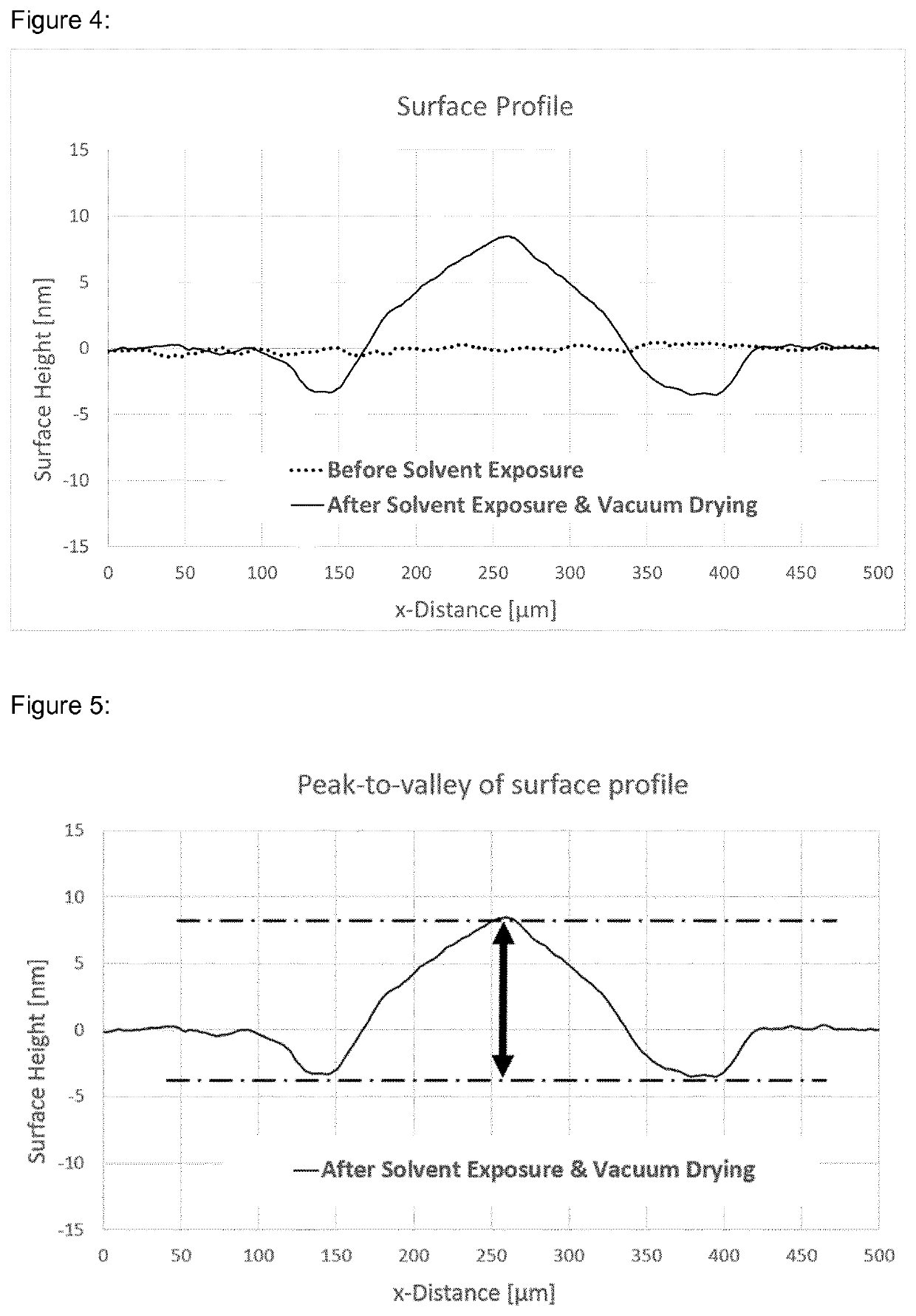Process for making electronic device
a technology of electronic devices and processing methods, applied in semiconductor devices, solid-state devices, photovoltaic energy generation, etc., can solve the problems of reduced device performance, reduced device performance, and reduced device performance, so as to improve device performance, improve device performance, and reduce the effect of aging
- Summary
- Abstract
- Description
- Claims
- Application Information
AI Technical Summary
Benefits of technology
Problems solved by technology
Method used
Image
Examples
working examples
Dissolution Tests
[0309]The determination of the solubility of a material in a solvent can be performed following ISO norm 7579:2009, which describes solubility determination by photometric or gravimetric methods. The photometric technique is recommended here, since the boiling points of the solvents considered are higher than 120° C.
[0310]Dissolution tests as described in the following were performed. The experiment was designed with particular focus on ease of reproducibility. The material(s) to be analyzed (which are used to form the first functional layer) were weighed into a transparent glass flask. A solvent (or a preformed solvent mixture) belonging to the list established in Table 3 was then added to the solid mixture at once, calculated to reach a final concentration of 7 g / L. The mixture was stirred at 600 rpm using a magnetic stirrer and at room temperature (25° C.) until complete dissolution, which was judged by visual inspection of the mixture. Towards the end of the dis...
PUM
| Property | Measurement | Unit |
|---|---|---|
| absolute solubility | aaaaa | aaaaa |
| absolute solubility | aaaaa | aaaaa |
| absolute solubility | aaaaa | aaaaa |
Abstract
Description
Claims
Application Information
 Login to View More
Login to View More - R&D
- Intellectual Property
- Life Sciences
- Materials
- Tech Scout
- Unparalleled Data Quality
- Higher Quality Content
- 60% Fewer Hallucinations
Browse by: Latest US Patents, China's latest patents, Technical Efficacy Thesaurus, Application Domain, Technology Topic, Popular Technical Reports.
© 2025 PatSnap. All rights reserved.Legal|Privacy policy|Modern Slavery Act Transparency Statement|Sitemap|About US| Contact US: help@patsnap.com



